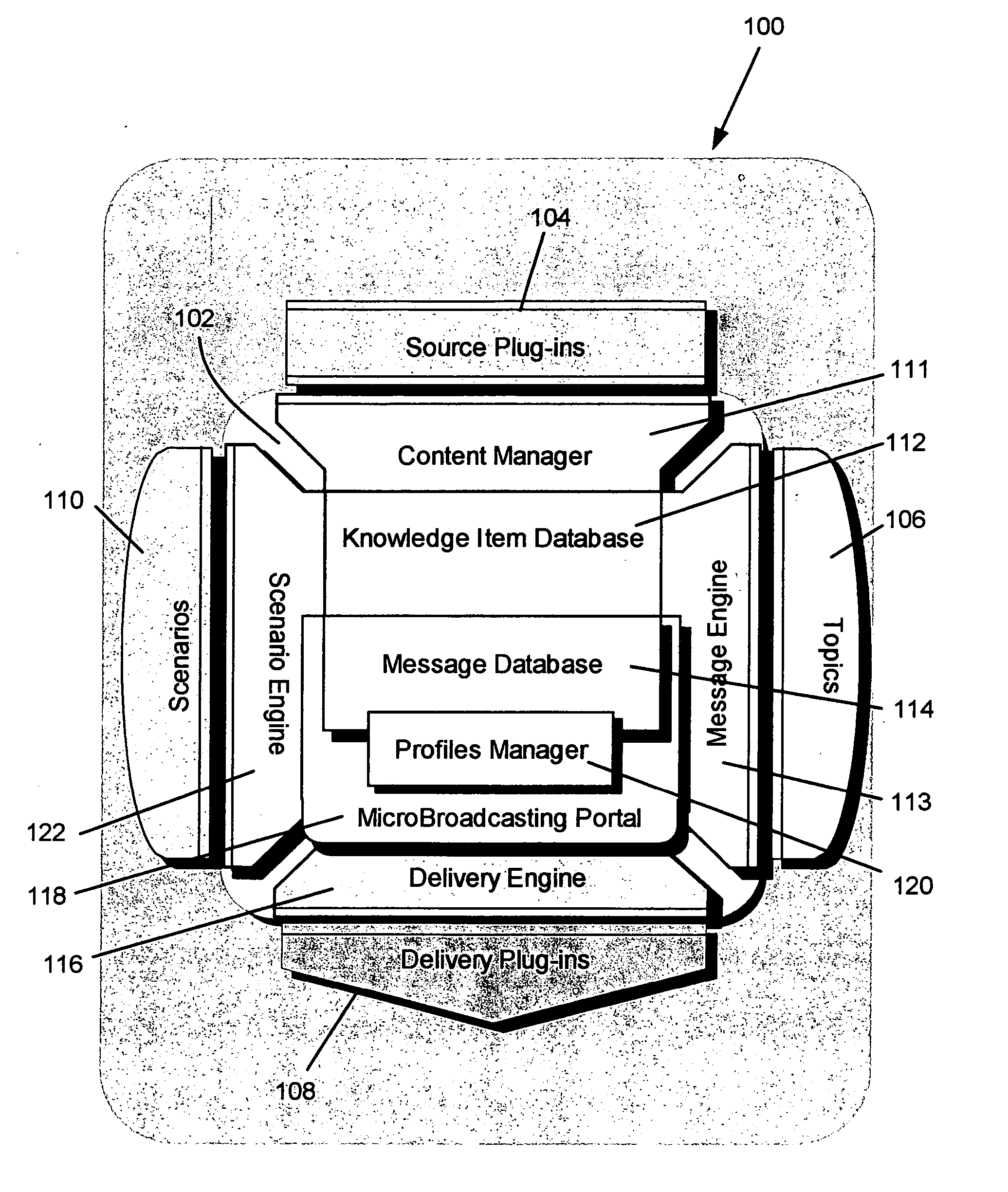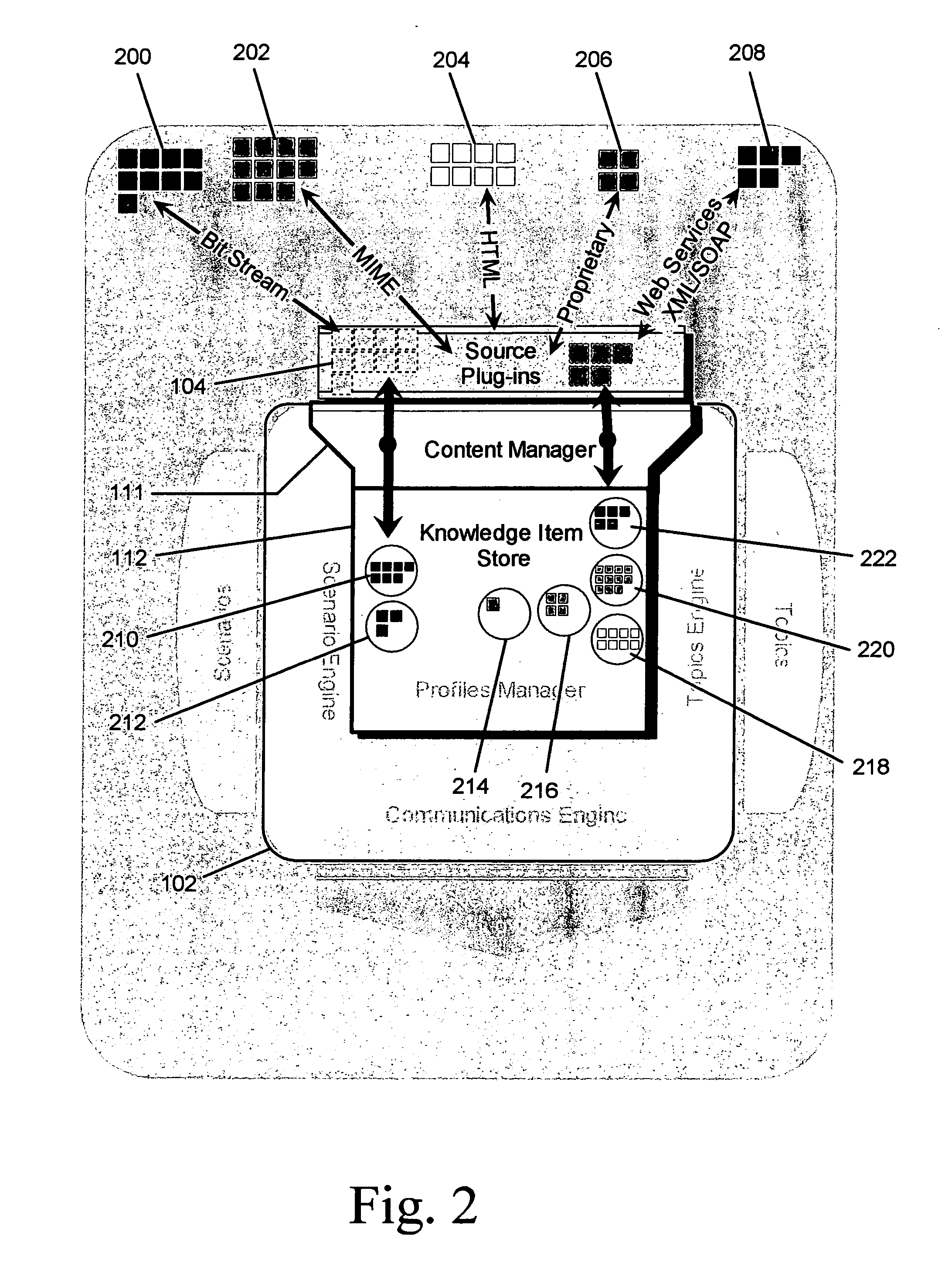Methods, systems, and computer program products for extensible, profile-and context-based information correlation, routing and distribution
- Summary
- Abstract
- Description
- Claims
- Application Information
AI Technical Summary
Benefits of technology
Problems solved by technology
Method used
Image
Examples
Embodiment Construction
[0096]FIG. 1 is a block diagram illustrating exemplary software modules of an extensible system for profile- and context-based information correlation, routing, and distribution according to an embodiment of the subject matter herein. Referring to FIG. 1, the system comprise a knowledge switch 100 including a core 102 and plug-ins 104, 106, 108, and 110 that extend the functionality of core 102. In the illustrated example, core 102 includes software modules that provide basic knowledge switch functionality. Software modules that provide this core functionality included a content manager 111, a knowledge item database 112, a message engine 113, a message database 114, a delivery engine 116, a microbroadcasting portal 118, a profiles manger 120, and a scenario engine 122. Content manager 111 merges data from individual sensors together with metadata that is representative of a real world context and stores the merged data as knowledge items in knowledge item database 112. Knowledge it...
PUM
 Login to View More
Login to View More Abstract
Description
Claims
Application Information
 Login to View More
Login to View More - R&D
- Intellectual Property
- Life Sciences
- Materials
- Tech Scout
- Unparalleled Data Quality
- Higher Quality Content
- 60% Fewer Hallucinations
Browse by: Latest US Patents, China's latest patents, Technical Efficacy Thesaurus, Application Domain, Technology Topic, Popular Technical Reports.
© 2025 PatSnap. All rights reserved.Legal|Privacy policy|Modern Slavery Act Transparency Statement|Sitemap|About US| Contact US: help@patsnap.com



